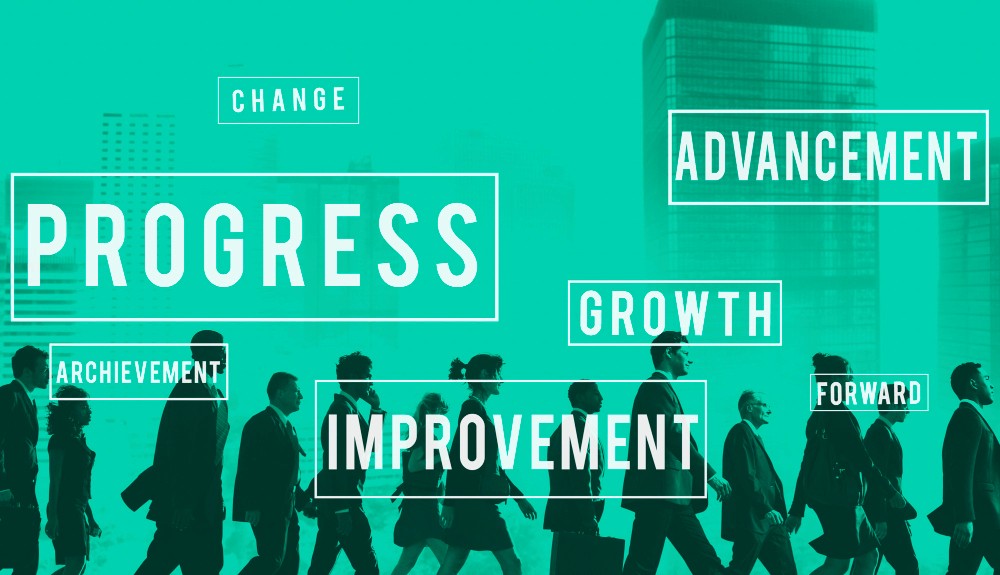Mid Phase
A Mid-Career Professional's Guide to Breaking Free: Reignite Your Passion and Overcome Career Stagnation

Team NxtClue
|
8 mins
|
Sep 1, 2024

0:00/1:34
Don't have enough time to read?
Listen

A Mid-Career Professional's Guide to Breaking Free: Reignite Your Passion and Overcome Career Stagnation
Imagine this: You’ve worked hard to climb the career ladder, steadily advancing through roles, gaining experience, and proving your worth. But lately, something feels off. The challenges that once excited you now feel routine. Your career growth seems to have stalled, and you can’t shake off the nagging fear that you’ve hit a plateau. Is this as far as you’ll go? Have you reached your peak?
If this scenario resonates with you, you’re not alone. Many mid-career professionals face the daunting fear of career stagnation—a sense that they’re stuck in their current roles with limited opportunities for growth, advancement, or skill development. The good news? A career plateau doesn’t have to be a dead end. With the right strategies and mindset, you can break free from stagnation, reignite your passion, and continue moving forward. Let’s explore how to overcome this fear and take actionable steps toward rejuvenating your career.
Understanding Career Stagnation
Does This Sound Like You?
Meet Amit. He’s been working as a Senior Data Analyst for over seven years. He’s proud of his achievements and the impact he’s made, but lately, he feels like he’s running on autopilot. The tasks that once challenged him now feel monotonous, and he’s unsure how to push beyond his current role. Like Amit, many mid-career professionals worry about stagnating in their careers, unsure how to break through the plateau.
If you’re nodding along, don’t worry—you’re not alone. Overcoming the fear of career stagnation is possible, and there are proactive steps you can take to regain momentum and continue growing. Here’s how to tackle career stagnation and keep moving forward with purpose and passion.
Strategies to Overcome Career Stagnation
1. Reflect and Reassess Your Career Goals
The first step to overcoming career stagnation is to take a step back and reflect on your career goals. Are you still aligned with the aspirations you set at the beginning of your career? Or have your priorities and interests shifted over time? Understanding your current career goals and aspirations is crucial to finding a new direction.
Solution: Set aside time for self-reflection to reassess your career goals. Consider what excites you, what you’re passionate about, and where you want to be in the next five to ten years. Identify whether you need a change in your current role, a new challenge, or a completely different career path.
Tip:
“Create a vision board or career roadmap that outlines your long-term goals and aspirations. Visualizing your career journey can help you stay focused and motivated to achieve your objectives.”
2. Seek New Challenges and Responsibilities
One of the most effective ways to break free from a career plateau is to seek new challenges and responsibilities within your current role or organization. Taking on new projects, learning new skills, or volunteering for cross-functional teams can help you expand your experience and demonstrate your ability to handle diverse tasks.
Solution: Identify opportunities within your organization where you can take on new challenges or responsibilities. Speak with your manager about your desire for growth and express interest in projects that align with your career goals. Proactively seek out ways to add value and showcase your skills.
Tip:
“Offer to lead a new project, mentor a junior colleague, or participate in a cross-departmental initiative. These opportunities can help you gain visibility, develop new skills, and break free from the monotony of your current role.”
3. Invest in Continuous Learning and Skill Development
Career stagnation often occurs when professionals feel their skills have plateaued or become outdated. Investing in continuous learning and skill development is essential to stay competitive and advance in your career. Acquiring new skills and knowledge can open doors to new opportunities and help you remain relevant in your field.
Solution: Identify skills that are in demand within your industry and align with your career goals. Pursue relevant training programs, certifications, or online courses to build these skills. Stay informed about industry trends and emerging technologies to remain competitive.
Tip:
“Create a personal development plan that outlines the skills you want to acquire, the resources needed, and a timeline for achieving your goals. Regularly review and update this plan to stay on track and ensure continuous growth.”
4. Network and Build Strategic Relationships
Building a strong professional network is crucial for career growth, especially when you’re feeling stuck. Networking can provide access to new opportunities, offer valuable insights, and connect you with mentors who can guide you on your career journey.
Solution: Actively engage in networking activities, both within and outside your organization. Attend industry events, join professional associations, participate in webinars, and connect with peers and thought leaders on social media platforms like LinkedIn. Build relationships with key influencers and decision-makers who can advocate for your advancement.
Tip:
“Schedule regular coffee chats or informational interviews with colleagues, mentors, or industry experts. Use these conversations to seek advice, share your career goals, and explore potential opportunities for growth.”
5. Consider Lateral Moves or Role Diversification
Sometimes, advancing your career doesn’t always mean climbing vertically; it could mean making a lateral move or diversifying your role. Lateral moves can provide new experiences, broaden your skill set, and open up new pathways for growth within your organization.
Solution: Explore lateral moves within your organization that align with your career goals. Consider roles in different departments, functions, or teams that offer new challenges and opportunities for learning. Diversifying your experience can help you develop a more holistic understanding of the organization and prepare you for future leadership roles.
Tip:
“Speak with your manager or HR about potential lateral moves or role diversification opportunities. Express your interest in exploring different areas and how these experiences align with your career aspirations.”
6. Embrace a Growth Mindset and Stay Open to Change
A growth mindset is the belief that abilities and intelligence can be developed through dedication and hard work. Embracing a growth mindset helps you view challenges as opportunities to learn and grow, rather than threats to your success. Staying open to change is crucial for overcoming career stagnation and finding new pathways for growth.
Solution: Cultivate a growth mindset by embracing new experiences, taking calculated risks, and viewing setbacks as learning opportunities. Stay open to change and be willing to adapt to new situations or roles that align with your career goals.
Tip:
“Regularly assess your progress and reflect on your experiences to identify areas for improvement and growth. Use these reflections to make informed decisions about your career path and continue moving forward.”
Conclusion
Overcoming the fear of career stagnation is a journey that requires self-reflection, proactive decision-making, continuous learning, and a commitment to growth. By reassessing your career goals, seeking new challenges, investing in skill development, building a strong network, considering lateral moves, and embracing a growth mindset, you can break free from stagnation and continue advancing in your career with purpose and passion.
Ready to break free from your career plateau and move forward with confidence? Start implementing these strategies today, and remember—your career is a journey, not a destination, and there are always new opportunities to explore and grow.
A Mid-Career Professional's Guide to Breaking Free: Reignite Your Passion and Overcome Career Stagnation
Imagine this: You’ve worked hard to climb the career ladder, steadily advancing through roles, gaining experience, and proving your worth. But lately, something feels off. The challenges that once excited you now feel routine. Your career growth seems to have stalled, and you can’t shake off the nagging fear that you’ve hit a plateau. Is this as far as you’ll go? Have you reached your peak?
If this scenario resonates with you, you’re not alone. Many mid-career professionals face the daunting fear of career stagnation—a sense that they’re stuck in their current roles with limited opportunities for growth, advancement, or skill development. The good news? A career plateau doesn’t have to be a dead end. With the right strategies and mindset, you can break free from stagnation, reignite your passion, and continue moving forward. Let’s explore how to overcome this fear and take actionable steps toward rejuvenating your career.
Understanding Career Stagnation
Does This Sound Like You?
Meet Amit. He’s been working as a Senior Data Analyst for over seven years. He’s proud of his achievements and the impact he’s made, but lately, he feels like he’s running on autopilot. The tasks that once challenged him now feel monotonous, and he’s unsure how to push beyond his current role. Like Amit, many mid-career professionals worry about stagnating in their careers, unsure how to break through the plateau.
If you’re nodding along, don’t worry—you’re not alone. Overcoming the fear of career stagnation is possible, and there are proactive steps you can take to regain momentum and continue growing. Here’s how to tackle career stagnation and keep moving forward with purpose and passion.
Strategies to Overcome Career Stagnation
1. Reflect and Reassess Your Career Goals
The first step to overcoming career stagnation is to take a step back and reflect on your career goals. Are you still aligned with the aspirations you set at the beginning of your career? Or have your priorities and interests shifted over time? Understanding your current career goals and aspirations is crucial to finding a new direction.
Solution: Set aside time for self-reflection to reassess your career goals. Consider what excites you, what you’re passionate about, and where you want to be in the next five to ten years. Identify whether you need a change in your current role, a new challenge, or a completely different career path.
Tip:
“Create a vision board or career roadmap that outlines your long-term goals and aspirations. Visualizing your career journey can help you stay focused and motivated to achieve your objectives.”
2. Seek New Challenges and Responsibilities
One of the most effective ways to break free from a career plateau is to seek new challenges and responsibilities within your current role or organization. Taking on new projects, learning new skills, or volunteering for cross-functional teams can help you expand your experience and demonstrate your ability to handle diverse tasks.
Solution: Identify opportunities within your organization where you can take on new challenges or responsibilities. Speak with your manager about your desire for growth and express interest in projects that align with your career goals. Proactively seek out ways to add value and showcase your skills.
Tip:
“Offer to lead a new project, mentor a junior colleague, or participate in a cross-departmental initiative. These opportunities can help you gain visibility, develop new skills, and break free from the monotony of your current role.”
3. Invest in Continuous Learning and Skill Development
Career stagnation often occurs when professionals feel their skills have plateaued or become outdated. Investing in continuous learning and skill development is essential to stay competitive and advance in your career. Acquiring new skills and knowledge can open doors to new opportunities and help you remain relevant in your field.
Solution: Identify skills that are in demand within your industry and align with your career goals. Pursue relevant training programs, certifications, or online courses to build these skills. Stay informed about industry trends and emerging technologies to remain competitive.
Tip:
“Create a personal development plan that outlines the skills you want to acquire, the resources needed, and a timeline for achieving your goals. Regularly review and update this plan to stay on track and ensure continuous growth.”
4. Network and Build Strategic Relationships
Building a strong professional network is crucial for career growth, especially when you’re feeling stuck. Networking can provide access to new opportunities, offer valuable insights, and connect you with mentors who can guide you on your career journey.
Solution: Actively engage in networking activities, both within and outside your organization. Attend industry events, join professional associations, participate in webinars, and connect with peers and thought leaders on social media platforms like LinkedIn. Build relationships with key influencers and decision-makers who can advocate for your advancement.
Tip:
“Schedule regular coffee chats or informational interviews with colleagues, mentors, or industry experts. Use these conversations to seek advice, share your career goals, and explore potential opportunities for growth.”
5. Consider Lateral Moves or Role Diversification
Sometimes, advancing your career doesn’t always mean climbing vertically; it could mean making a lateral move or diversifying your role. Lateral moves can provide new experiences, broaden your skill set, and open up new pathways for growth within your organization.
Solution: Explore lateral moves within your organization that align with your career goals. Consider roles in different departments, functions, or teams that offer new challenges and opportunities for learning. Diversifying your experience can help you develop a more holistic understanding of the organization and prepare you for future leadership roles.
Tip:
“Speak with your manager or HR about potential lateral moves or role diversification opportunities. Express your interest in exploring different areas and how these experiences align with your career aspirations.”
6. Embrace a Growth Mindset and Stay Open to Change
A growth mindset is the belief that abilities and intelligence can be developed through dedication and hard work. Embracing a growth mindset helps you view challenges as opportunities to learn and grow, rather than threats to your success. Staying open to change is crucial for overcoming career stagnation and finding new pathways for growth.
Solution: Cultivate a growth mindset by embracing new experiences, taking calculated risks, and viewing setbacks as learning opportunities. Stay open to change and be willing to adapt to new situations or roles that align with your career goals.
Tip:
“Regularly assess your progress and reflect on your experiences to identify areas for improvement and growth. Use these reflections to make informed decisions about your career path and continue moving forward.”
Conclusion
Overcoming the fear of career stagnation is a journey that requires self-reflection, proactive decision-making, continuous learning, and a commitment to growth. By reassessing your career goals, seeking new challenges, investing in skill development, building a strong network, considering lateral moves, and embracing a growth mindset, you can break free from stagnation and continue advancing in your career with purpose and passion.
Ready to break free from your career plateau and move forward with confidence? Start implementing these strategies today, and remember—your career is a journey, not a destination, and there are always new opportunities to explore and grow.
0:00/1:34
Don't have enough time to read?
Listen


8 mins
Mid Phase
A Mid-Career Professional's Guide to Breaking Free: Reignite Your Passion and Overcome Career Stagnation

Team NxtClue
|
Sep 1, 2024
Copyright © 2024 NxtClue | All Rights Reserved

I May Not Be the Menu, But I Can Still Guide You – I Know Some Shortcuts!
With us
Decision is yours
Without us

Copyright © 2024 NxtClue | All Rights Reserved

I May Not Be the Menu, But I Can Still Guide You – I Know Some Shortcuts!
With us
Decision is yours
Without us

Related Blogs
Related Blogs

I May Not Be the Menu, But I Can Still Guide You – I Know Some Shortcuts!
With us
Decision is yours
Without us

Copyright © 2024 NxtClue | All Rights Reserved

